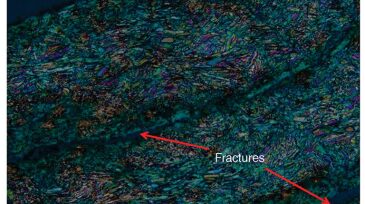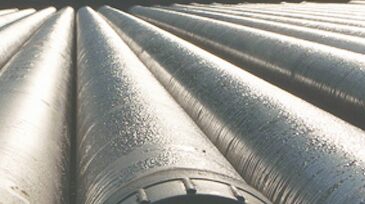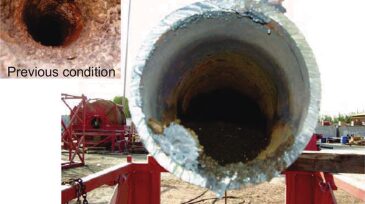Oilfield chemistry
This study compares water-based chemicals that can be used for enhancing the oil recovery of shale-oil reservoirs, including surfactants, nanoparticles, and ketones.
The experience captured in this paper illustrates the potential of deepwater riserless wireline subsea intervention capability and the fact that it can be expanded beyond hydraulic-only, simple mechanical, and plugging-and-abandonment scopes.
This paper presents a novel methodology for assessing the rapid mineral carbonation of carbon dioxide through geochemical interactions with carbon-, magnesium-, and iron-rich minerals abundant in geological formations.
-
Calcium sulfate (CaSO4) in the form of gypsum and anhydrite is one of the more prevalent evaporite minerals typically found in the carbonate rocks of the western Canadian sedimentary basin (WCSB).
-
The removal of mineral scale in the oil field is typically perceived as a somewhat nonscientific discipline.
-
Sour gas is being produced from a number of carbon-steel-completed wells in the US, Canada, France, and Saudi Arabia.
-
This work introduces sodium gluconate as an efficient and environmentally friendly iron-chelating agent.
-
This feature takes a look at the work being done by companies to improve corrosion inhibitor fluids and inhibition techniques for offshore projects.
-
The development and upgrade of mature facilities is ultimately driven by the significant shift in the composition of the arrival fluids, mainly the increasing water cut and solids production.
-
The gas-producing carbonate zones of the Ghawar field in eastern Saudi Arabia have been affected by extensive iron sulfide (FeS) scale deposition, reducing overall gas production and increasing risks during well interventions.
-
This paper describes various sulfide inhibitor-testing techniques that have been applied to candidate products for the management of zinc sulfide (ZnS) and lead sulfide (PbS) in a gas/condensate field with a known relatively severe ZnS/PbS scaling problem.
-
Critical to success is the accurate testing in the laboratory that best approximates field conditions.
-
Ferrous sulfide (FeS) precipitation increases during shale-gas and -oil production because of increased biologically and thermally induced sulfide production. Although FeS scale is abundant, little is understood about its precipitation and inhibition properties.












